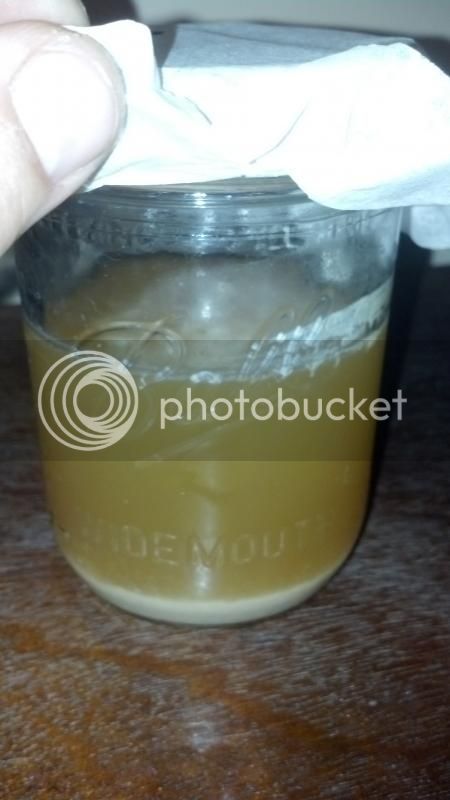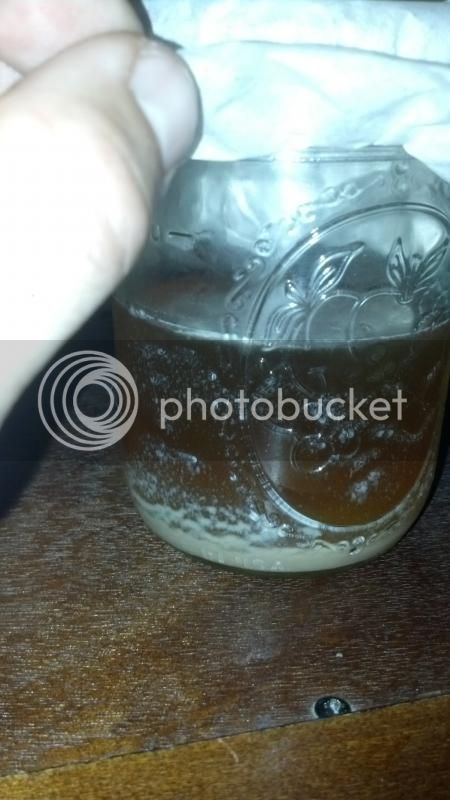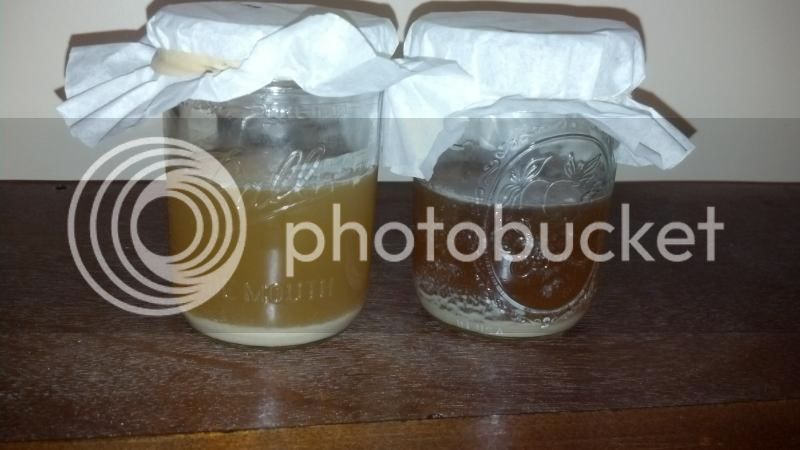sockmerchant
Well-Known Member
Hey guys I need some thoughts. I did a brew yesterday (belgian strong), and did that thing where you get tired after cleaning and left the hydro sample out and forget about it. So, just before lunch time today I noticed it had gotten a bit cloudy, poured myself a beer and left it there.
I went back tonight... and a lot of stuff was happening in there. Mini fermentation.

Now there is a chance that I had tiny amounts yeast matter left in the cylinder. I dont wash it too thoroughly between brews but it does get a decent rinse out. Even if this is this case, I would have thought it would take more than 24 hours to reach this level of fermentation from such a small amount of yeast.
I am guessing that its probably some old yeast, mixed with bugs around my garage. I have had some definite brett infection in the past. (tasted bloody good!)
Whats happened here? I am curious so poured it off into a jar and put some foil over it. I intend to see what it results in. This is another two hours later:

PS: I have since added another third clean water. OG was 1.072 afterall
I went back tonight... and a lot of stuff was happening in there. Mini fermentation.

Now there is a chance that I had tiny amounts yeast matter left in the cylinder. I dont wash it too thoroughly between brews but it does get a decent rinse out. Even if this is this case, I would have thought it would take more than 24 hours to reach this level of fermentation from such a small amount of yeast.
I am guessing that its probably some old yeast, mixed with bugs around my garage. I have had some definite brett infection in the past. (tasted bloody good!)
Whats happened here? I am curious so poured it off into a jar and put some foil over it. I intend to see what it results in. This is another two hours later:

PS: I have since added another third clean water. OG was 1.072 afterall

























![Craft A Brew - Safale BE-256 Yeast - Fermentis - Belgian Ale Dry Yeast - For Belgian & Strong Ales - Ingredients for Home Brewing - Beer Making Supplies - [3 Pack]](https://m.media-amazon.com/images/I/51bcKEwQmWL._SL500_.jpg)


































